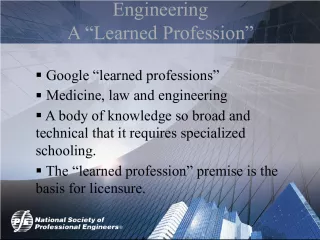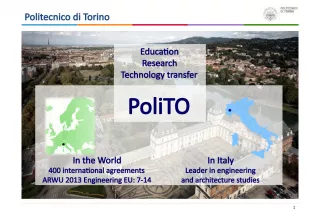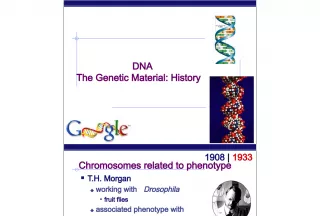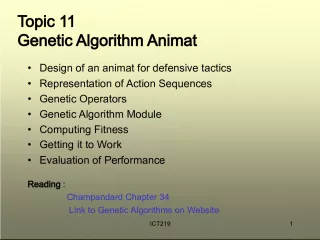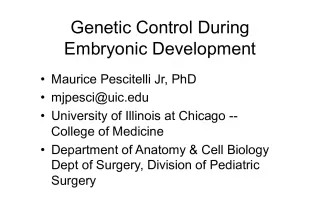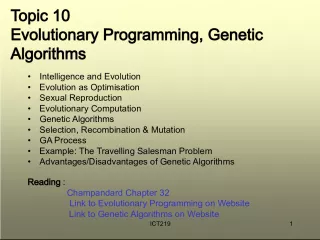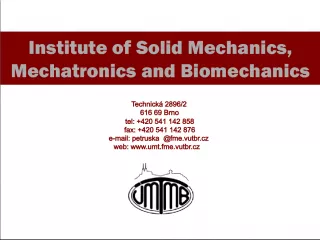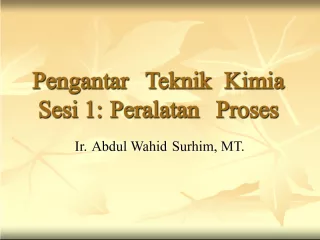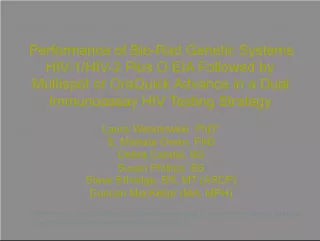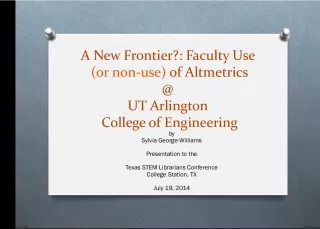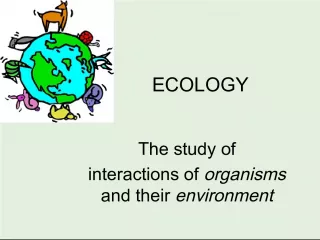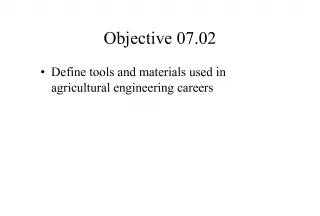Genetic Engineering and Selective Breeding
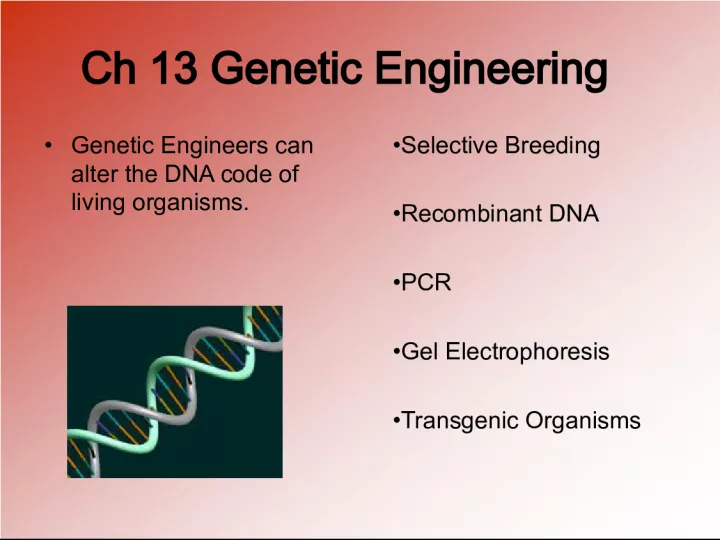

In Chapter 13, we explore the ways in which genetic engineers can alter the DNA code of living organisms. This involves techniques such as recombinant DNA, PCR, gel electrophores
- Uploaded on | 2 Views
-
 howardharper
howardharper
About Genetic Engineering and Selective Breeding
PowerPoint presentation about 'Genetic Engineering and Selective Breeding'. This presentation describes the topic on In Chapter 13, we explore the ways in which genetic engineers can alter the DNA code of living organisms. This involves techniques such as recombinant DNA, PCR, gel electrophores. The key topics included in this slideshow are . Download this presentation absolutely free.
Presentation Transcript
Slide1Ch 13 Genetic Engineering• Genetic Engineers can alter the DNA code of living organisms. • Selective Breeding • Recombinant DNA • PCR • Gel Electrophoresis • Transgenic Organisms
Slide2Selective Breeding• Breed only those plants or animals with desirable traits • People have been using selective breeding for 1000’s of years with farm crops and domesticated animals.
Slide3Selective Breeding Knowing what we know about genetics and how traits are passed, scientists used that information to produce offspring with specific traits . Think back to Mendel and his pea plants Selective breeding is simply being picky/selective about which parents reproduce This process is commonly done with animals and plants . What different plants and animals do you think have been bred for a specific purpose or for a specific look?
Slide5Reasons for selective breedingMost species of animals, when they reproduce only will with strong partners who will produce strong children, more chances for survival Plants are selectively bred for certain traits like taste, speed of growth, hardiness, and usefulness. They can also be bred for healthy eating or for looks Humans do a lot of selective breeding with vegetables like the colorful cauliflower and many animals. Most dog breeds are selectively bred for different purposes and looks.
Slide6Recombinant DNA• The ability to combine the DNA of one organism with the DNA of another organism. • Recombinant DNA technology was first used in the 1970’s with bacteria.
Slide7Recombinant Bacteria1. Remove bacterial DNA (plasmid). 2. Cut the Bacterial DNA with “ restriction enzymes ”. 3. Cut the DNA from another organism with “ restriction enzymes”. 4. Combine the cut pieces of DNA together with another enzyme and insert them into bacteria. 5. Reproduce the recombinant bacteria. 6. The foreign genes will be expressed in the bacteria.
Slide8Benefits of RecombinantBacteria 1. Bacteria can make human insulin or human growth hormone. 1. Bacteria can be engineered to “eat” oil spills.
Slide9The DNA of plants and animals can also be altered. PLANTS 1. disease-resistant and insect-resistant crops 2. Hardier fruit 3. 70-75% of food in supermarket is genetically modified .
Slide10How to Create a GeneticallyModified Plant 1.Create recombinant bacteria with desired gene. 2. Allow the bacteria to “infect" the plant cells. 3. Desired gene is inserted into plant chromosomes.
Slide11Genetically modified organisms arecalled transgenic organisms . TRANSGENIC ANIMALS 1. Mice – used to study human immune system 2. Chickens – more resistant to infections 3. Cows – increase milk supply and leaner meat 4. Goats, sheep and pigs – produce human proteins in their milk
Slide12Human DNA ina Goat Cell This goat contains a human gene that codes for a blood clotting agent. The blood clotting agent can be harvested in the goat’s milk. . Transgenic Goat
Slide13Desired DNAis added to an egg cell. How to Create a Transgenic Animal
Slide14Ha Ha Ha!
Slide15Polymerase Chain ReactionPCR • PCR allows scientists to make many copies of a piece of DNA. 1. Heat the DNA so it “unzips”. 2. Add the complementary nitrogenous bases. 3. Allow DNA to cool so the complementary strands can “zip” together.
Slide16Gel Electrophoresis • This technology allows scientists to identify someone’s DNA!
Slide17Steps Involved in GelElectrophoresis 1. “Cut” DNA sample with restriction enzymes. 2. Run the DNA fragments through a gel. 3. Bands will form in the gel. 4. Everyone’s DNA bands are unique and can be used to identify a person. 5. DNA bands are like “genetic fingerprints”.
Slide18This powerpoint was kindly donated towww.worldofteaching.com http://www.worldofteaching.com is home to over a thousand powerpoints submitted by teachers. This is a completely free site and requires no registration. Please visit and I hope it will help in your teaching.



